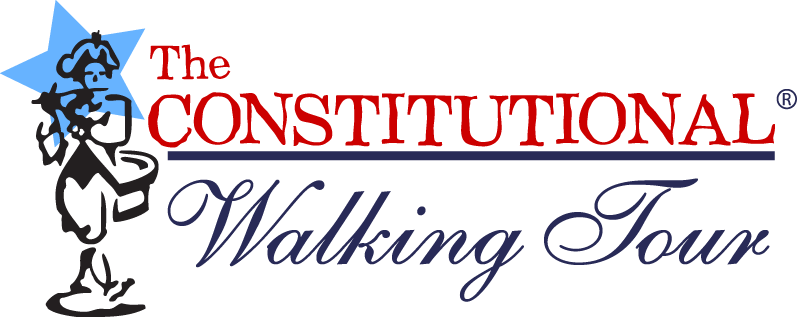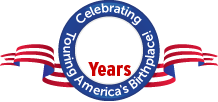One of Philadelphia’s most iconic sights
The History
Boathouse Row’s history can be traced back to the creation of the Fairmount Water Works in 1812. After being devastated by the Yellow Fever Epidemic of 1793, (learn more on our special Yellow Fever Tour!) Philadelphia sought to improve the cleanliness and quality of its water supply. The result was the creation of Fairmount Water Works, a then state or the art city water system that supplies the city of Philadelphia with fresh water from the Schuylkill River. The Fairmount Dam was constructed across the Schuylkill River to direct water toward a mill house which would use the water’s energy to pump fresh water into Philadelphia homes. The creation of this dam fundamentally changed the Schuylkill River from a fast moving tidal stream into a placid river which slowly flowed over the Fairmount Dam. The new Schuylkill River proved to be a popular place for ice skating in the winter and in the summer, the new sport of rowing started to become very popular in the area.
By 1858 the sport had become such a popular recreational activity on the Schuylkill River that the Schuylkill Navy was formed. The Schuylkill Navy is the oldest amateur athletic governing body in the United States and consists of some of Philadelphia’s most historic rowing clubs. Many of these historic clubs had their own boathouses on the Schuylkill River but these houses were very utilitarian nature and not very pleasing to look at it. When the city of Philadelphia took over much of the land surrounding the Schuylkill River to create Fairmount Park, they begin to take issue with some of the old boathouses lining the Schuylkill River. Many of the boathouses were condemned by the city and any new boathouses that would be built would now have to be approved by the city and meet an architectural standard for design that would befit the world class park they were being constructed within.

Boathouse Row - Credit: BoathouseRow.org
The current structures on Boathouse Row were constructed between the years of 1860 and 1904 and unlike the modest structures that came before them; these new boathouses were brilliantly designed by some of Philadelphia’s most acclaimed architects. Many of the boathouses are designed in the Victorian Gothic style but overall the architecture is very diverse as some structures are also built in the Mediterranean Style, Picturesque Victorian and Colonial Revival and designed by architects such as Frank Furness, one of the most revered architects from the Victorian era and George and William Hewitt who also designed the Philadelphia Bourse.
Philadelphia’s rowing scene became world famous when Philadelphian John B. Kelly Sr. won three gold medals in the 1920 and 1924 Olympic Games. A few decades later, Kelly’s son, John B. Kelly Jr. would participate in four straight Olympic Games, winning one medal. Today a statue of John B. Kelly Sr. is located north of Boathouse Row on the Schuylkill River. Also Kelly Drive, the road running behind Boathouse Row and along the Schuylkill River is named after John B. Kelly Jr. The Kelly’s aren’t just Philadelphian Rowing Royalty, actress Grace Kelly, the former Princess of Monaco is the daughter of John Sr. and the sister of John Jr.
What to See
Today the beautiful and historic houses of Boathouse Row are illuminated at night, in the traditional white as has been done for many years, as well as in thematic LED colorful displays for various holidays and special events. The lights outline every edge of the structures and makes for a breathtaking display at night as the lights reflect down on the Schuylkill River below. This image of the illuminated houses of Boathouse Row has become among the most iconic in Philadelphia. The best views of Boathouse Row are actually located across the Schuylkill River from Boathouse Row on the western side of the River. The western side of the Schuylkill River Trail next to Martin Luther King Drive gives you the perfect vantage point for this beautiful view.For a closer view of Boathouse Row head across the Schuylkill River to the eastern side of the Schuylkill River Trail. The Schuylkill River trail runs right next to Boathouse Row.
While nice to look, these boathouses were of course constructed for a reason and rowing on the Schuylkill River remains a popular activity even today. In the spring the Schuylkill River that flows next to Boathouse Row is frequently the site of NCAA crew competitions involving local Philadelphia colleges such as the University of Pennsylvania, St. Joseph’s, Drexel, Temple, LaSalle and Villanova. One frequent sight on the Schuylkill River is dragon boats, a traditional Chinese boat design. Over 20 teams participate each year in the Philadelphia International Dragon Boat Festival, which takes place on the Schuylkill River near boathouse row. Below, videographer Cory Popp captures the intense experience of a practice with the Penn Dragon Boat Club.
The Schuylkill River is also the location of the Dad Vail Regatta, the largest intercollegiate rowing event in the United States. Every year over a hundred colleges and universities compete in the event that has been held annually in Philadelphia since 1953. The enormous event brings many spectators to the banks of the Schuylkill River and some of the best rowers from all across the country.

Dad Vail Regatta - Credit: VisitPhilly.com
Insider Info
For those who want to do more than enjoy Boathouse Row from land, we’ve also got some information for those who wish to row in the Schuylkill River. While Schuylkill River access is restricted during rowing competitions, the Schuylkill River is otherwise open to the public. A publicly accessible launch point is located north of Boathouse Row along Kelly Drive next to the Strawberry Mansion Bridge. While there is no cost to row in the Schuylkill River, all unpowered boats do need a permit from the Pennsylvania Fish & Boat Commission before you can take them out onto the river. Permits cost only $10 a year and an application form can be found here.
If you’re not in possession of your own boat but still wish to row the Schuylkill River, you still have an option. Many of the organizations that own boathouses on Boathouse Row are actually open to the public to join. Joining one of these century old rowing organizations will give you access to rowing equipment and an opportunity to take rowing lessons. Best of all, joining a rowing organization will give you access to one of the famous boathouses of Boathouse Row!
Boathouse Row
Directions
Boathouse Row is located roughly 2.5 miles away from the historic sites in Old City Philadelphia so guests of The Constitutional Walking Tour will likely find walking to be a lengthy trek. If you plan on driving there is a lot of parking available at the Philadelphia Museum of Art which is conveniently located mere minutes away from Boathouse Row. If you wish to take public transportation, the 38 bus provides a convenient trip between Old City and Boathouse Row. Boathouse Row is also located nearby to 30th Street Station which is a major station in Philadelphia served by the Market Frankford Subway, Numerous Trolley Lines and Amtrak.
Hours
While the Boathouses themselves are not open to the public, the park space surrounding them is open to the public 24/7.
Additional Information
Boathouse Row
1 Boathouse Row
Philadelphia, PA 19130




